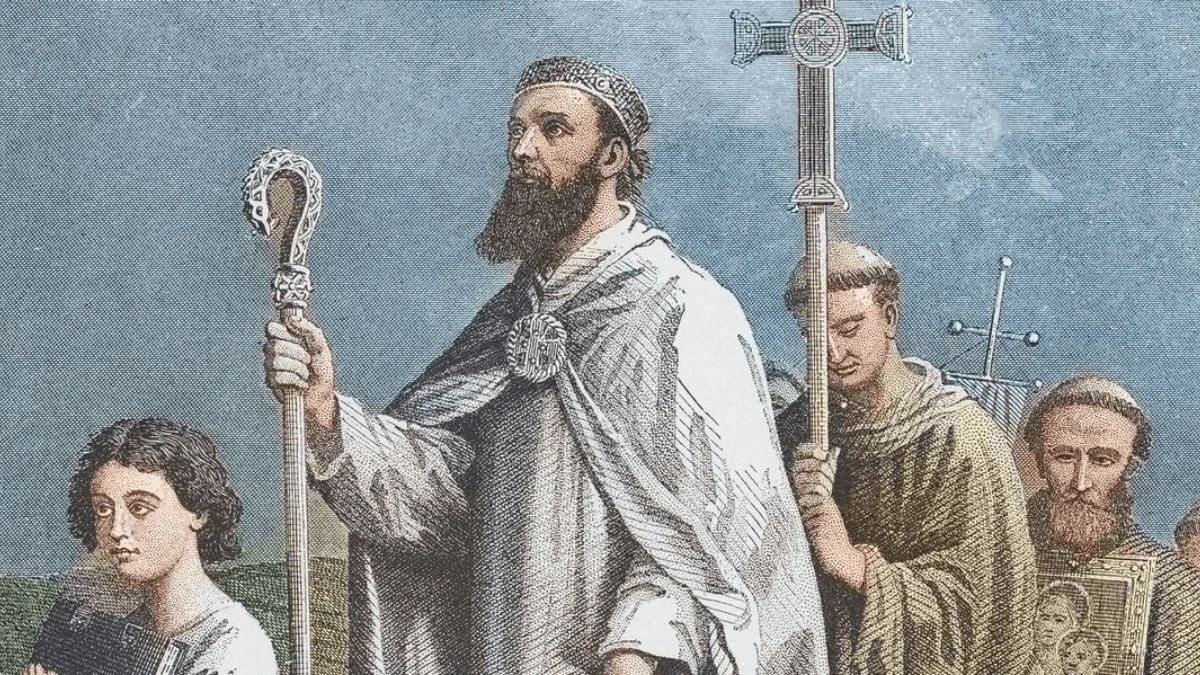St. Patrick’s Day, or the Feast of St. Patrick, is celebrated in more countries than any other national festival. It commemorates St. Patrick, one of Ireland’s patron saints, who ministered to Christianity in Ireland during the fifth century.
But the day is not just about St. Patrick, or even solely about Irish culture. It’s a day for those who want to celebrate Irish heritage and culture, regardless of their ethnic background.
Key Facts about St. Patrick’s Day
- Date: March 17
- Significance: Commemorates St. Patrick and the arrival of Christianity in Ireland
- Celebrations: Public parades, wearing of green attire, public feasts, and more
The Need to Explore Its Origins
Understanding the origins of St. Patrick’s Day gives us a deeper appreciation of the celebration. It allows us to see beyond the parades and green-colored festivities, and to truly understand the historical and cultural significance of the day.
Reasons to Explore the Origins of St. Patrick’s Day:
- Cultural Appreciation: Understanding the origins helps us appreciate Irish culture and history.
- Historical Significance: It sheds light on the historical events that led to the establishment of the celebration.
- Global Impact: It helps us understand how and why the celebration became a global phenomenon.
Who was St. Patrick?
St. Patrick, the patron saint of Ireland, is one of Christianity’s most widely known figures. But for all his celebrity, his life remains somewhat of a mystery.
Early Life and Background of St. Patrick
Many of the stories that make up the life of St. Patrick are a mix of history and legend. He was born in Britain—near the end of the fourth century—not Ireland. At the age of 16, he was kidnapped by Irish raiders and spent six years as a shepherd before he managed to escape.
His Journey to Ireland
According to his writing, a voice—which he believed to be God’s—spoke to him in a dream, urging him to leave Ireland. He did but returned later to convert the Irish to Christianity.
By the time of his death on March 17, 461, he had established monasteries, churches, and schools.
His Role in Irish History and Culture
Many legends grew up around St. Patrick’s. For example, the narrative of him driving the snakes out of Ireland is not true.
But metaphorically, the story points to the fact that he drove paganism (symbolized by snakes) out of Ireland.

Origins of St. Patrick’s Day
St. Patrick’s Day, as we know it today, has evolved from its early days of religious observance to a worldwide celebration of Irish culture.
The Inception of St. Patrick’s Day
St. Patrick’s Day was originally a religious feast day for St. Patrick—the patron saint of Ireland.
It was observed by the Catholic Church, the Anglican Communion, the Eastern Orthodox Church, and the Lutheran Church. The day commemorates St. Patrick and the arrival of Christianity in Ireland.
The Significance of the Date
The choice of March 17 has been traditionally attributed to the believed date of St. Patrick’s death. As such, the day has been observed as a religious holiday for over a thousand years. On St. Patrick’s Day, which falls during the Christian season of Lent, Irish families would traditionally attend church in the morning and celebrate in the afternoon.
The First St. Patrick’s Day Celebration
The first recorded St. Patrick’s Day parade was not in Ireland but in the United States. Irish soldiers serving in the English military marched through New York City on March 17, 1762. Along with their music, the parade helped the soldiers reconnect with their Irish roots.
Evolution of the Celebration Over the Years
Over the years, St. Patrick’s Day celebrations have transformed significantly. The holiday has evolved into a celebration of Irish culture with parades, special foods, music, dancing, and a whole lot of green.
St. Patrick’s Day in America
The celebration of St. Patrick’s Day was brought to America by Irish immigrants as a way of affirming their identity. It’s evolved there into a celebration of all things Irish.
The Irish Diaspora and the Introduction of St. Patrick’s Day in America
The Irish diaspora in America played a significant role in shaping the way St. Patrick’s Day is celebrated. Fleeing poverty and famine in their home country, Irish immigrants brought their customs and traditions with them, including the celebration of St. Patrick’s Day.
Timeline of the Irish diaspora
| Year | Event |
| 1845 | The Great Famine begins in Ireland, leading to mass emigration |
| 1850 | Approximately one million Irish arrive in America |
| 1860 | Irish immigrants make up nearly half of all immigrants in America |
The First American St. Patrick’s Day Parade
The first recorded St. Patrick’s Day parade in America took place in New York City on March 17, 1762. This parade was not so much a celebration of the holiday as it was a show of strength and solidarity among the Irish immigrants.
Evolution of the Celebration in the U.S.
Over the years, the celebration of St. Patrick’s Day in America has evolved and expanded. Today, it’s not just a day for the Irish, but a celebration of Irish culture for everyone, regardless of their heritage.
Key changes in the celebration over the years
- Expansion of the Parade: The St. Patrick’s Day parade has grown from a small gathering of Irish immigrants to a large-scale event attracting millions of spectators.
- Inclusion of Non-Irish Groups: Over time, non-Irish groups have been included in the parade, making it a multicultural event.
- Commercialization: The holiday has been commercialized, with businesses selling Irish-themed products and promoting St. Patrick’s Day sales.
Modern Celebrations of St. Patrick’s Day
St. Patrick’s Day is celebrated in more countries than any other national festival. Modern celebrations include public parades and festivals, wearing of green attire, and public feasting.
Traditional Practices and Customs
St. Patrick’s Day is marked by several customs and traditions, some of which include:
- Parades: St. Patrick’s Day parades are a major part of the celebration, with the largest held in Dublin, followed by New York, Boston, and Chicago.
- Wearing Green: It’s customary to wear green on St. Patrick’s Day. Some people also adorn themselves with a sprig of shamrock.
- Feasting: Many people celebrate St. Patrick’s Day with a traditional meal of corned beef and cabbage.
St. Patrick’s Day Parades Around the World
St. Patrick’s Day parades are held in many corners of the world. Here are a few notable ones:
- Dublin, Ireland: The St. Patrick’s Festival in Dublin is a multi-day celebration that includes a parade, concerts, outdoor theater performances, and fireworks.
- New York City, USA: The New York City St. Patrick’s Day Parade is one of the oldest and largest in the world, with over 150,000 participants and nearly 3 million spectators.
- Sydney, Australia: The Sydney St. Patrick’s Day Parade was once the largest in the Southern Hemisphere and continues to draw a significant crowd.
Food and Drink Associated with the Celebration
St. Patrick’s Day is also a feast day. Some traditional foods and drinks associated with St. Patrick’s Day include:
- Corned Beef and Cabbage: This is a traditional Irish-American dish eaten on St. Patrick’s Day.
- Irish Soda Bread: This is a type of quick bread that uses baking soda as a leavening agent.
- Irish Whiskey and Beer: These are often consumed in celebration of the holiday.
Differences in Celebrations Across the World
While St. Patrick’s Day is celebrated in many parts of the world, the nature of the celebrations can vary widely. For instance, in some places, it’s a largely religious occasion, while in others, it’s a more secular celebration of Irish culture and heritage.
Related Post
- St. Patrick’s Day in St. Louis
- St. Patrick’s Day in Carbondale
- St. Patrick’s Day Activities for Kids
- Does the Mail Run on St. Patrick’s Day
Conclusion
St. Patrick’s Day, a cultural and religious celebration observed on March 17, has a rich history that dates back more than a thousand years. From its origins as a religious feast day in Ireland, it has evolved into a global celebration of Irish culture.
Recap of the Origins and Evolution of St. Patrick’s Day
St. Patrick’s Day began as a religious observance in honor of St. Patrick, who played a crucial role in bringing Christianity to Ireland. The day was marked by attending church and feasting in the afternoon. With the spread of Irish immigrants around the world, particularly in America, the nature of the celebration began to change.
The first St. Patrick’s Day parade took place in New York City in 1762, organized by Irish soldiers serving in the English military. Over time, the parades grew in scale and grandeur, and the day evolved from a religious observance into a celebration of all things Irish.
Final Thoughts on the Global Celebration of Irish Culture
Today, St. Patrick’s Day is celebrated with much fanfare around the world. Parades, wearing of green attire, public feasts, and music and dancing have become synonymous with the day. While the celebrations may vary across different regions, the spirit of honoring Irish culture remains at the heart of it all.

